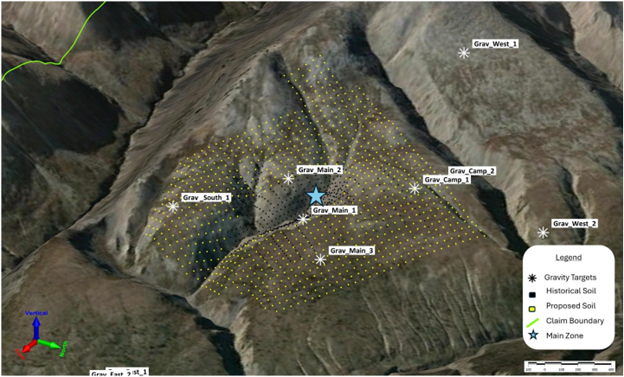Reviewed by Lexie CornerMay 15 2025
Integral Metals Corp. has announced the commencement of Phase 2 of its exploration program at the 100 %-owned KAP Project in the Mackenzie Mountains, Northwest Territories. This next phase will include a high-resolution soil geochemistry survey aimed at identifying potential Mississippi Valley-Type (MVT) lead-zinc mineralization, with gallium and germanium enrichment, beneath shallow overburden.
 Proposed soil sample stations around the Main Showing. Image Credit: Integral Metals Corp.
Proposed soil sample stations around the Main Showing. Image Credit: Integral Metals Corp.
The KAP Property spans 7,500 hectares and is underlain by Middle Devonian carbonate stratigraphy, which is favorable for Mississippi Valley-Type (MVT) mineralization. Historical exploration by Cominco Ltd. and Firesteel Resources Inc. identified multiple showings of high-grade sphalerite and galena mineralization, largely hosted within the Recrystallized Zone, a dolomitized and silicified carbonate unit.
Integral’s 2024 exploration campaign confirmed the presence of gallium and germanium within the deposit, supporting earlier findings and highlighting the project's potential for key metals.
Approximately 1,000 soil samples will be collected on a 50 m by 50 m grid, with the Main Showing and nearby priority targets forming the core of the Phase 2 investigation. The Main Showing is the property’s most advanced prospect. Mineralization is typically associated with collapse breccia bodies located within the Recrystallized Zone at the base of the Landry Formation. This stratabound zone exhibits characteristics typical of MVT systems, including silicification, structural control, and spatial correlation with carbonate fault contacts.
The soil grid will also cover extensions of interpreted geophysical anomalies identified in previous gravity surveys. Notably, the “Grav_Main_3” target is a strong, untested 0.5 mGal gravity anomaly thought to correspond to shallow, blind mineralization.
Soil geochemistry has already proven effective on the property, with anomalous lead and zinc concentrations observed directly above known mineralized zones. This survey aims to refine subsurface targets and prioritize areas for drill target modeling in a proposed Phase 3 program, with drilling to follow in Phase 4.
The KAP Project lies approximately 160 kilometers west of Wrigley and 220 kilometers south of Norman Wells, accessible by helicopter. Multiple mineralized showings are distributed across a 12-kilometer by 3-kilometer corridor, where deeply incised valleys expose the prospective Arnica-Landry contact.
To date, work on the property has included historical and modern drilling, geophysical surveys, trenching, geochemical analysis, and 3D modeling, all of which point to the potential presence of a district-scale MVT system enriched with key metals.
We’re excited to move forward with Phase 2 at the KAP Project. This next phase of exploration will be important in helping us pinpoint future drilling targets.
Paul Sparkes, Chief Executive Officer, Integral Metals Corp.